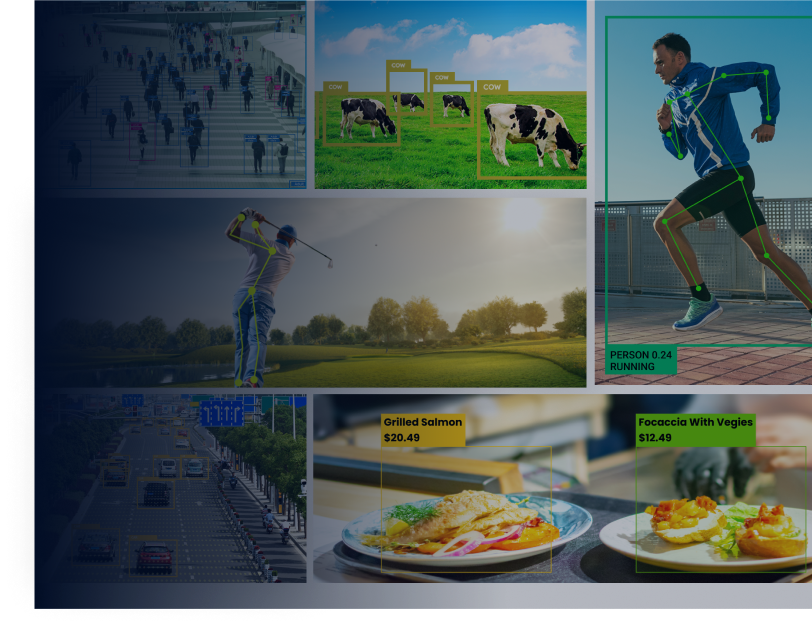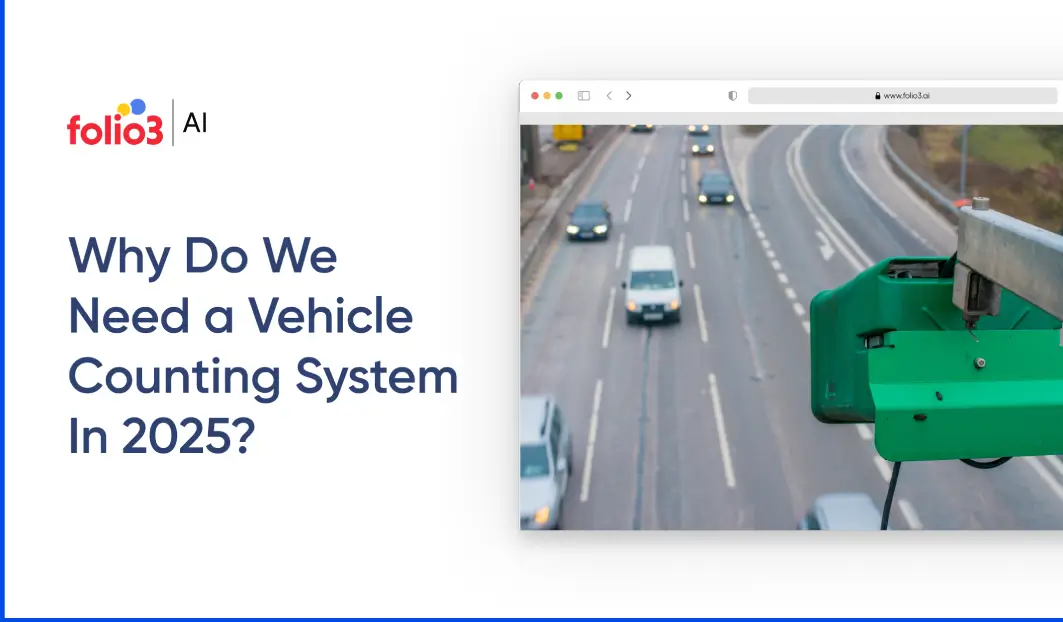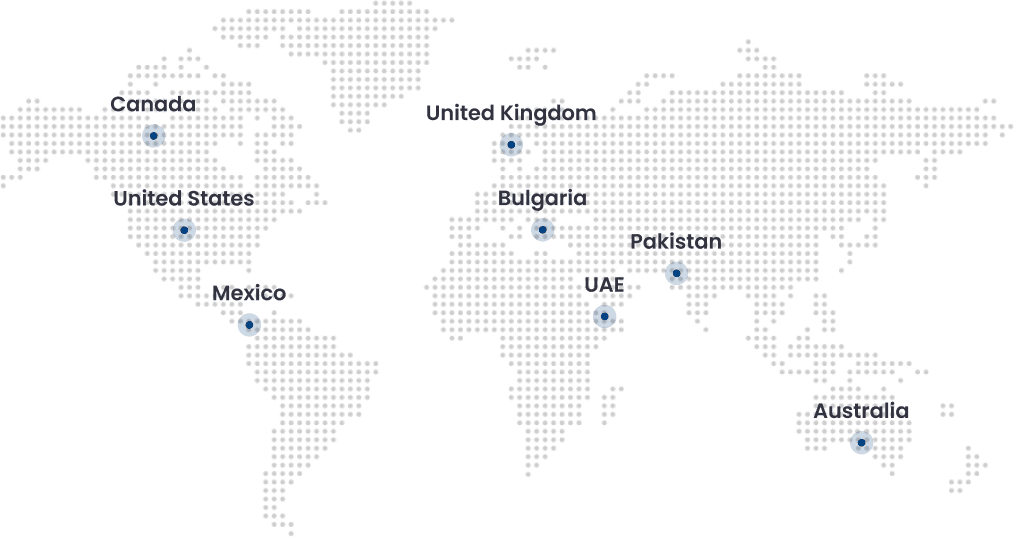In today’s rapidly evolving urban environments, the need for efficient traffic management and transportation planning has never been greater. AI-powered vehicle counting has emerged as a powerful solution, using deep learning and computer vision to detect, classify, and count vehicles in real time.
By leveraging technologies such as smart cameras, inductive loop detectors, and even Bluetooth or Wi-Fi tracking, modern vehicle counting systems provide accurate, 24/7 data in even the most complex traffic control conditions. This data is crucial not only for transportation authorities but also for city planners, retailers, smart parking operators, event coordinators, and security agencies.
From optimizing traffic flow and enhancing road safety to improving parking infrastructure and guiding urban development, vehicle analytics is transforming how cities and businesses address transportation challenges, leading to smarter, safer, and more sustainable communities.
What is Vehicle Counting?
AI vehicle counting is the foundation for managing large urban infrastructures, where vehicle volume and traffic congestion are experiencing rapid and staggering growth. It uses machine learning and computer vision to automatically detect, classify, and count vehicles in video footage or real-time camera feeds.
This system analyzes images from traffic cameras or surveillance systems, identifies different types of vehicles (cars, trucks, buses, motorcycles, etc.), and keeps track of the number and movement of these vehicles without human intervention. It’s used for traffic management, smart city planning, tolling, parking monitoring, and safety enforcement.
The core advantage lies in its accuracy, scalability, and ability to function in various lighting and weather conditions.
Vehicle counting systems are also commonly deployed on roads, highways, parking lots, and other traffic-sensitive areas to gather essential data on traffic volume, congestion patterns, and peak travel times. This data supports traffic management, infrastructure planning, and the optimization of public and commercial spaces.
By providing insights into traffic flow and occupancy, It assists in smart city initiatives, contributing to safer, more efficient urban environments.

How Does AI Vehicle Counting Work?
The operation of real-time vehicle detection and tracking involves several key components.
1. Data Acquisition
It requires high-resolution cameras strategically installed at intersections, highways, parking lots, and toll booths. These cameras capture continuous video feeds, serving as the primary data source for the AI system.
2. Object Detection
To detect and count each vehicle, several advanced AI models, such as YOLO (You Only Look Once) and CenterNet, are used to process video frames and identify vehicles. These models are trained on extensive datasets, enabling them to recognize various vehicle types under different lighting and weather conditions
3. Image or Signal Processing
When using cameras, vehicle counting systems apply computer vision techniques to analyze live video feeds. The algorithms can identify, classify, and count vehicles as they move across the screen. Alternatively, signal-based sensors capture data by detecting changes in magnetic fields or radar waves as vehicles move over or past them.
5. Object Tracking
Once vehicles are detected, tracking algorithms like Deep SORT (Simple Online and Realtime Tracking) monitor their movement across frames. This ensures accurate counting by preventing duplicate counts of the same vehicle.
6. Counting Mechanism
Virtual lines or zones are defined within the camera’s field of view. When a vehicle crosses these predefined areas, the system increments the count, categorizing it based on vehicle type and direction of movement.
7. Data Analysis and Reporting
The collected data is aggregated and analyzed to generate actionable insights. Dashboards and reports provide information on traffic volume, peak hours, vehicle detection and classification, and more, aiding in traffic management and infrastructure development decision-making.
Applications of AI Vehicle Counting in the USA
In the United States, AI vehicle counting software are used for various purposes and sectors
- Urban Traffic Management: Cities like Los Angeles and New York use AI counting to optimize traffic signals and reduce congestion.
- Toll Collection: AI systems ease toll operations by accurately counting vehicles and classifying them for appropriate toll charges.
- Parking Management: Shopping centers and airports implement AI counting to monitor parking occupancy and improve space utilization.
- Event Management: During crowded events, AI helps manage vehicle flow and ensure efficient entry and exit.
Law Enforcement: Agencies employ AI counting with license plate recognition to monitor traffic violations and enhance public safety.
5. Data Analysis and Reporting
The collected data is aggregated and analyzed to generate actionable insights. Dashboards and reports provide information on traffic volume, peak hours, vehicle classification, and more, aiding in traffic management and infrastructure development decision-making.
Folio3 AI Vehicle Counting Solution: A Key to Sustainable Urban Mobility
To maintain sustainable mobility, every issue must be under control, such as vehicle crashes, travel time, and congestion. Gathering necessary information and tracking each vehicle are key to managing these challenges. folio3 ai solutions simplifies this process, providing accurate data and insights for curbing traffic issues and minimizing their adverse effects.
It’s easy to manage and offers valuable details to help maintain smoother traffic flow and improve road safety.
- Real-Time Detection & Counting:
Folio3 AI system delivers precise vehicle counting and tracking in real time across highways, intersections, tolls, and parking lots, ensuring no missed counts or delays. - Unmatched Accuracy in All Conditions:
Performs reliably in rain, fog, low light, glare, and heavy traffic, ensuring comprehensive vehicle tracking without overlooking any vehicles. - Effortless Integration:
Easily integrates with existing CCTV or IP cameras, eliminating the need for new hardware, making deployment quick and cost-effective. - Scalable to Any Scope:
Adapts seamlessly from single parking lots to city-wide networks, maintaining high-quality performance as traffic volume and infrastructure expand. - Elimination of Manual Counting:
Automates data collection, reducing human error and providing reliable, accurate insights for better decision-making. - Designed for Complex Traffic Scenarios:
Handles intricate traffic dynamics like ramp merges and high-speed zones, flagging issues such as stalled vehicles or wrong-way driving. - Optimized for High-Volume Areas:
Efficiently manages traffic in busy urban areas, offering real-time insights into vehicle counts, traffic flow, and congestion.
Conclusion
Vehicle counting solutions have evolved from being a convenience to an absolute necessity—especially in countries like the United States, where dense urban areas and growing transportation demands future of urban mobility.
As cities face increasing pressure to reduce congestion, improve safety, and plan more sustainably, AI-powered vehicle counting systems offer a game-changing advantage. These intelligent solutions automate the entire process of monitoring, tracking, and analyzing traffic in real time, eliminating the inefficiencies of manual methods.
By harnessing the power of computer vision and machine learning, AI not only delivers unmatched accuracy but also enables cities and organizations to make data-driven decisions with speed and confidence.
For the U.S. and other nations aiming to build safer, more efficient, and future-ready transportation networks, AI-based vehicle counting is no longer optional—it’s essential
FAQS
A Vehicle Counting System is a technology designed to monitor and record the number of vehicles that pass a specific point, such as a road, intersection, or parking lot. It uses various sensors, cameras, and software to collect and analyze traffic data.
These systems utilize different kinds of sensors, including infrared, magnetic, ultrasonic, and video analytics, to detect and count vehicles. The data is processed in real-time to provide accurate traffic counts and patterns.
Vehicle counting is crucial for urban planning as it helps city planners and engineers understand traffic patterns, identify congestion points, and make informed decisions about infrastructure development and improvements.
In 2025, the benefits include enhanced traffic management, improved safety, better resource allocation, insights for future infrastructure projects, and support for smart city initiatives that rely on data-driven decision-making.
By providing real-time data on vehicle counts, these systems help traffic management centers optimize signal timings, manage congestion, and provide drivers with information about traffic conditions, ultimately improving overall traffic flow.

Manahil Samuel holds a Bachelor’s in Computer Science and has worked on artificial intelligence and computer vision She skillfully combines her technical expertise with digital marketing strategies, utilizing AI-driven insights for precise and impactful content. Her work embodies a distinctive fusion of technology and storytelling, exemplifying her keen grasp of contemporary AI market standards.









